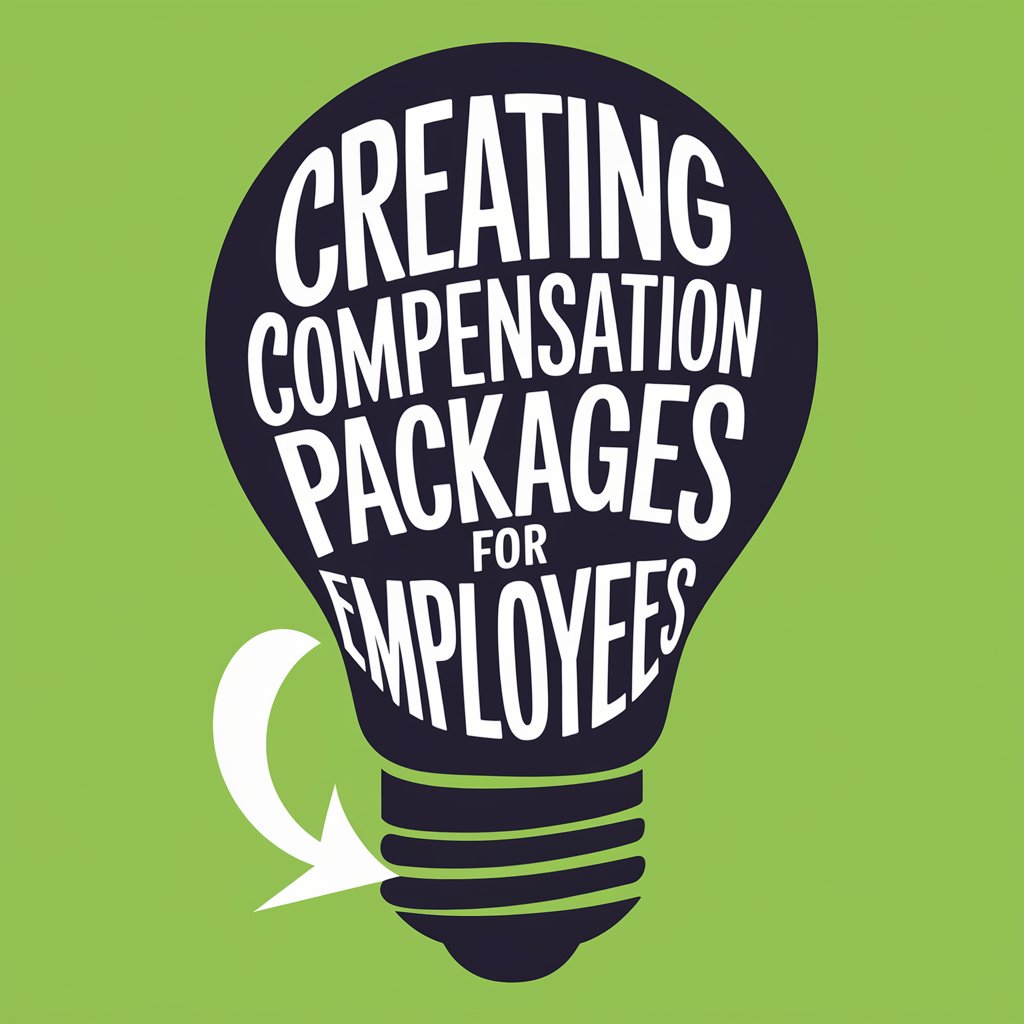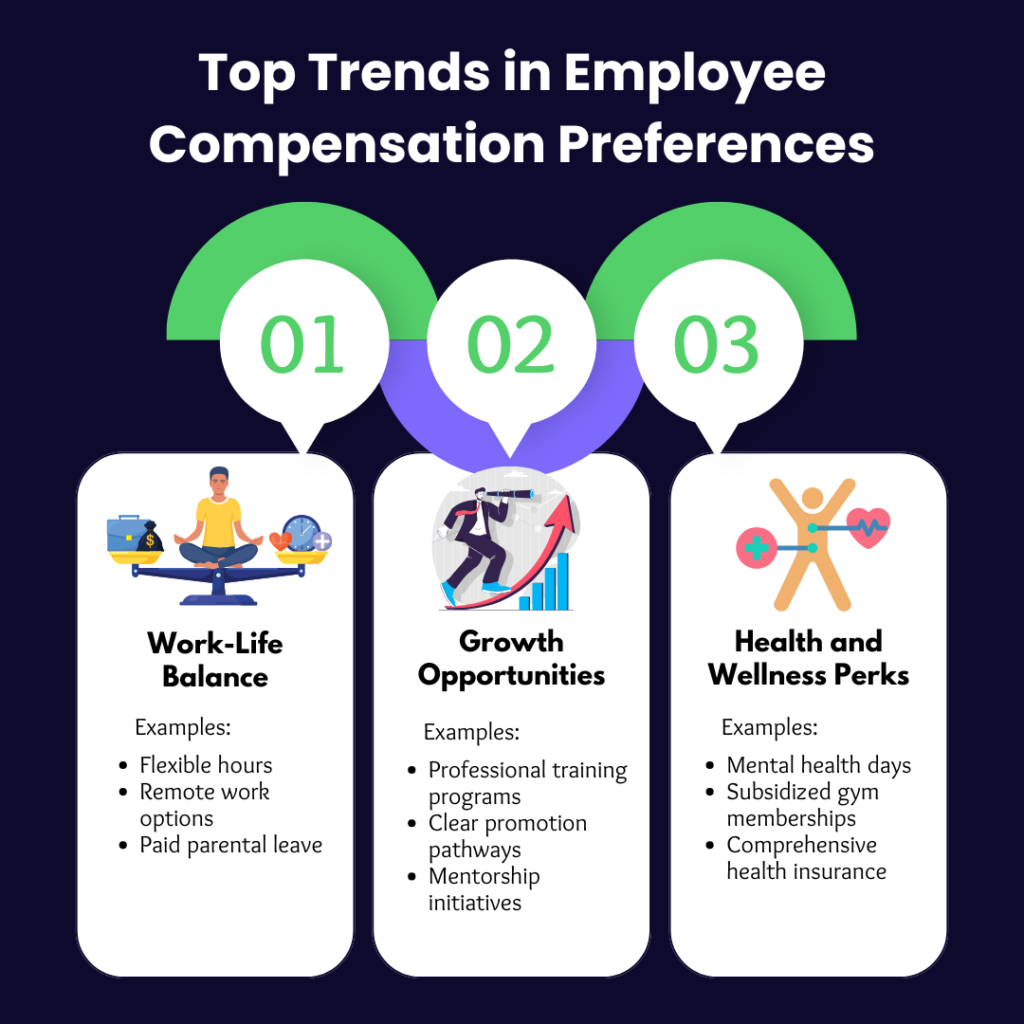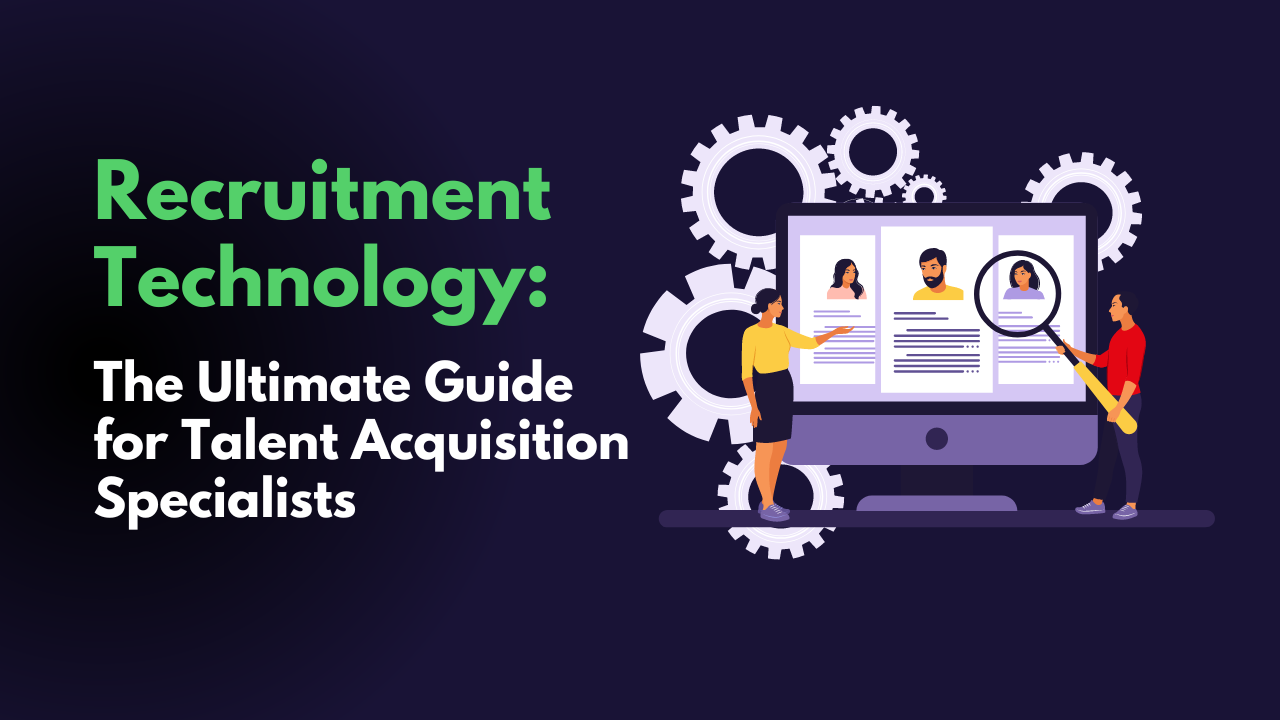Attracting and retaining top performers is a priority for organizations looking to stay competitive in today’s rapidly evolving job market. A well-crafted compensation package isn’t just about offering a paycheck—it’s a strategic tool to build loyalty, enhance job satisfaction, and secure the talent that drives innovation and success. Research shows that employees who feel adequately compensated are 25% more likely to stay with their employer long-term, underlining the critical role of thoughtful remuneration strategies.
Top performers expect more than just a salary; they value a holistic approach that includes benefits like career development opportunities, work-life balance initiatives, and recognition programs. These elements are essential in creating packages that not only attract high-caliber candidates but also make them want to stay.
This blog dives into the science and strategy behind creating compensation packages that resonate with the workforce of today. From understanding what matters most to employees to implementing metrics that ensure long-term effectiveness, we’ll explore actionable insights to help organizations align compensation strategies with their overarching business goals. Whether you’re revising existing packages or starting from scratch, this guide will help you design offerings that truly set your organization apart.

Monetary Compensation
Salary:
At its core, monetary compensation begins with a competitive salary. Regular market analysis is crucial to ensure salaries remain competitive within the industry and region. For top performers, benchmarking data often suggests offering packages in the 75th percentile or higher to secure their talent.
Bonuses:
Performance bonuses tied to individual, team, or organizational achievements are a powerful motivator. These can include annual bonuses, spot rewards for exceptional work, or even project completion incentives.
Incentives:
Structured performance-based incentives, such as sales commissions or milestone-based rewards, align employee efforts with business goals. This ensures that top performers feel directly rewarded for their contributions to the company’s success.
Non-Monetary Benefits
Flexible Schedules:
With the rise of hybrid and remote work models, offering flexible schedules has become a key differentiator. Employees value autonomy in how and when they work, which can lead to higher productivity and satisfaction.
Remote Work Options:
The ability to work remotely not only reduces commute times but also fosters better work-life balance. Many companies now provide remote work stipends to help employees set up productive home offices.
Wellness Programs:
Health and wellness perks, including gym memberships, mental health resources, and stress management workshops, have proven to boost morale and reduce absenteeism. Organizations that prioritize employee wellness often experience higher engagement and retention rates.
Professional Development:
Offering reimbursement for certifications, training programs, and educational courses signals to employees that the company is invested in their growth. Such benefits are highly appealing to top performers who seek continuous learning.
Equity and Profit-Sharing
Equity Plans:
Equity compensation, such as stock options or restricted stock units (RSUs), provides employees with a stake in the company’s success. This not only fosters loyalty but also aligns employee interests with long-term organizational goals. Equity plans are especially attractive to high performers looking for long-term financial growth.
Profit-Sharing:
By distributing a portion of profits among employees, companies create a sense of shared achievement. Profit-sharing can be structured annually or quarterly and serves as an effective retention strategy, ensuring that employees feel rewarded for the company’s success.
Retention Through Ownership:
When employees have a financial stake in the company, they are more likely to remain committed. These long-term incentives can reduce turnover, particularly among high-value talent.
Identifying What Top Performers Want
Understanding what top performers value in their compensation and work environment is essential for designing packages that attract and retain them. This requires a strategic approach combining market research, employee feedback, and staying informed about evolving workplace trends.
Market Research: Benchmarking Competitive Pay
Top performers expect competitive pay that reflects their skills and contributions. Conducting thorough market research allows organizations to stay ahead in offering salaries and benefits. Industry benchmarks, salary surveys, and platforms like PayScale or Glassdoor provide critical insights into pay scales for various roles and regions.
Benchmarking goes beyond salaries. It includes analyzing bonuses, equity offerings, and benefits provided by competitors. Companies that use these insights to craft compelling packages ensure they meet or exceed expectations, avoiding the risk of losing high-value talent to better-paying competitors.
Employee Feedback: Gaining Insights from Within
While market data offers external insights, employee feedback provides a vital internal perspective. Surveys, focus groups, and one-on-one interviews can help identify priorities among current staff and reveal gaps in the compensation structure.
High-performing employees often have unique motivations, so direct communication can uncover preferences that generic strategies might miss. For example, some may value additional paid leave, while others might prioritize professional development opportunities. This feedback can inform personalized approaches to compensation that resonate deeply with employees.
Exit interviews also offer valuable data. Understanding why top performers leave can help identify whether compensation, work environment, or growth opportunities were lacking. Addressing these concerns proactively creates a more attractive offering for current and prospective talent.
Trending Preferences: Evolving Needs of Top Talent
In recent years, trends in employee preferences have shifted significantly. Factors like work-life balance and professional growth opportunities are no longer “nice-to-haves” but critical components of compensation packages.
Work-Life Balance:
Top performers are increasingly drawn to companies offering flexibility in how and where they work. Options like hybrid schedules, remote work arrangements, and generous parental leave reflect an understanding of their need for balance. Work-life balance isn’t just about time off; it includes creating a workplace culture that respects boundaries and prevents burnout.
Professional Development:
Career growth remains a top priority. Offering access to training programs, certifications, and mentoring can set organizations apart. Platforms like LinkedIn Learning and partnerships with educational institutions make it easier for companies to integrate these opportunities into their offerings.
Social Responsibility:
Employees increasingly value companies that align with their personal ethics and contribute to societal good. Environmental sustainability initiatives and diversity, equity, and inclusion programs enhance a company’s appeal among purpose-driven professionals.

Strategic Elements of an Attractive Compensation Package
Crafting a compensation package that resonates with top performers requires more than just offering competitive salaries. A strategic approach that aligns with business objectives, personalizes offerings, and ensures transparent communication can make the difference in attracting and retaining high-value talent.
Aligning Compensation with Business Goals
Effective compensation packages should not only attract top talent but also support the organization’s broader objectives. Aligning compensation strategies with business goals ensures a strong return on investment (ROI). For instance, performance-based incentives directly link employee success to company success, motivating high performers to drive results.
Employers can implement structures such as profit-sharing or stock options, which connect employees’ efforts to the company’s financial health. This approach fosters a sense of ownership and commitment, encouraging employees to think and act like stakeholders. Additionally, aligning compensation with key performance indicators (KPIs) helps prioritize and reward behaviors that directly impact the company’s strategic objectives, such as customer retention or innovation.
By regularly reviewing compensation strategies against organizational goals, businesses can ensure they remain competitive while maximizing the value they derive from their investment in talent.
Personalized Offers: Meeting Individual Needs
No two employees are the same, and a one-size-fits-all approach to compensation often falls short. Personalizing compensation packages demonstrates that an organization values its employees’ unique needs and aspirations.
Customization might involve offering flexible work arrangements for employees prioritizing work-life balance or providing additional professional development resources for those focused on career growth. Technology platforms and HR analytics tools can help identify individual preferences and tailor offers accordingly.
For example, offering options such as a wellness allowance, childcare support, or additional vacation days allows employees to choose benefits that align with their priorities. Personalized offers also appeal to diverse demographics, addressing the needs of different age groups, life stages, and career goals. This adaptability can be particularly effective in retaining top talent, as it reflects a commitment to supporting their personal and professional journeys.
Transparent Communication: Building Trust and Satisfaction
Transparency in compensation practices fosters trust, which is crucial for employee satisfaction and retention. When employees understand how their compensation is determined and what opportunities exist for growth, they are more likely to feel valued and motivated.
Clearly defined salary ranges, bonus structures, and equity plans reduce ambiguity and ensure fairness. Regular communication about how compensation aligns with performance and market trends reinforces trust. For example, organizations can provide access to internal tools or reports that show employees where they stand within compensation bands relative to their role and industry standards.
Additionally, transparency extends to discussing non-monetary benefits. Openly outlining policies on remote work, flexible schedules, or professional development opportunities highlights the full value of the compensation package. Consistent messaging from leadership and HR teams ensures employees feel informed and confident about their rewards.
Measuring the Success of Compensation Strategies
An effective compensation strategy not only attracts top talent but also contributes to employee retention, satisfaction, and overall business performance. Measuring its success requires tracking specific metrics and adapting strategies based on actionable insights and feedback.
Key Metrics to Track
To evaluate the impact of compensation strategies, organizations must monitor key performance indicators (KPIs) tied to recruitment, engagement, and financial efficiency.
-
Retention Rates: Retention rates reveal how well a compensation strategy encourages employees to stay with the organization. A high retention rate indicates that employees feel valued and adequately rewarded. Conversely, high turnover could suggest dissatisfaction with pay, benefits, or overall compensation structure. Regularly assessing these rates helps identify trends and pinpoint areas for improvement.
-
Employee Satisfaction Surveys: These surveys provide direct insights into how employees perceive their compensation packages. Questions should address not only salary but also non-monetary benefits like flexibility, growth opportunities, and workplace culture. High satisfaction scores indicate alignment between employee expectations and the organization’s offerings.
-
Cost-Per-Hire Metrics: This metric measures the financial efficiency of recruitment strategies, including compensation. A rising cost-per-hire could indicate that the company is overspending to attract candidates, potentially highlighting inefficiencies in the overall compensation structure. Balancing competitive offers with sustainable costs is critical for long-term success.
-
Internal Pay Equity: Analyzing how compensation compares within and across roles ensures fairness and reduces potential dissatisfaction. Pay equity is essential for fostering trust and preventing attrition due to perceived inequities.
-
Performance Metrics: For roles tied to quantifiable outcomes, tracking productivity, sales, or other KPIs can indicate whether performance-based incentives are effective in motivating employees.
Iterative Improvements
Compensation strategies must evolve to remain competitive in dynamic markets. Continuous iteration based on data and feedback ensures alignment with employee expectations and organizational goals.
-
Leveraging Data Insights: Compensation data, derived from tools like HR analytics platforms or industry benchmarks, allows organizations to identify gaps and trends. For example, if satisfaction surveys consistently highlight the need for remote work options, incorporating flexibility into compensation packages can address these concerns.
-
Gathering Feedback: Conduct regular one-on-one discussions, focus groups, or anonymous surveys to gather qualitative feedback. Employees’ perspectives often reveal nuances that raw data might miss, such as preferences for specific benefits or frustrations with current offerings.
-
A/B Testing Strategies: Experimenting with variations in compensation structures helps determine what works best. For example, an organization could trial different bonus schemes—such as quarterly versus annual payouts—and evaluate their impact on performance and satisfaction.
-
Revisiting Benchmarks: Regularly compare compensation packages to industry standards to ensure they remain competitive. This step is particularly critical in industries where demand for top talent fluctuates.
-
Continuous Communication: Keep employees informed about how compensation strategies evolve and why changes are implemented. Transparent communication builds trust and demonstrates the organization’s commitment to meeting employee needs.
Conclusion
Strategic compensation planning is pivotal in attracting, retaining, and motivating top talent in today’s competitive workforce. By understanding the components of compensation, identifying what employees value, and tailoring packages to align with both individual needs and organizational goals, companies can create robust strategies that drive engagement and loyalty. Moreover, tracking the success of these strategies through key metrics and iterating based on insights ensures ongoing alignment with market demands and workforce expectations.




